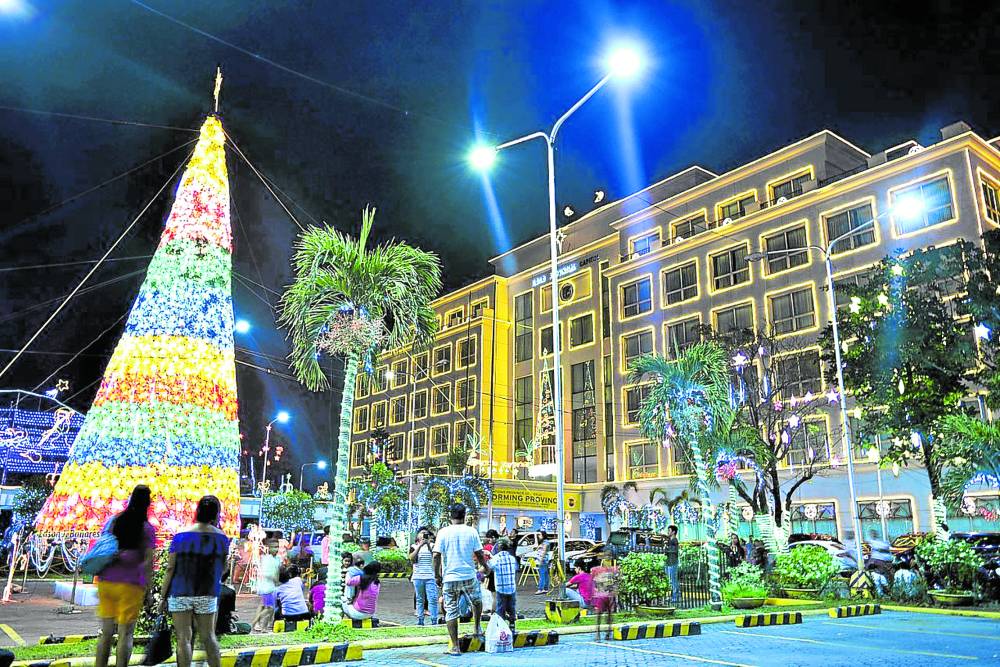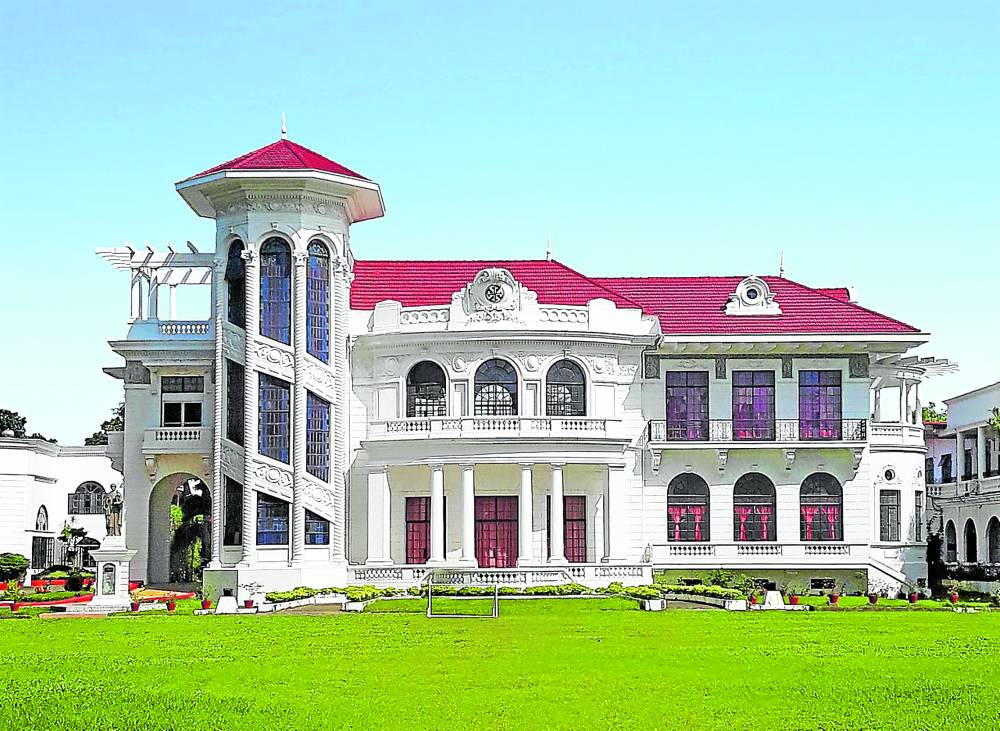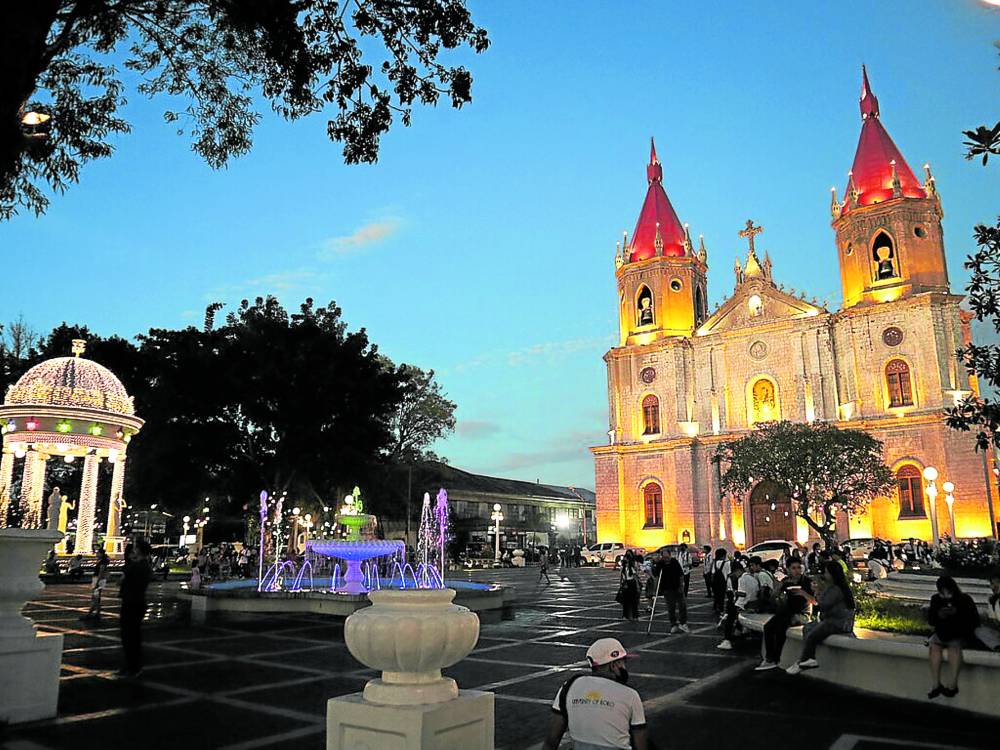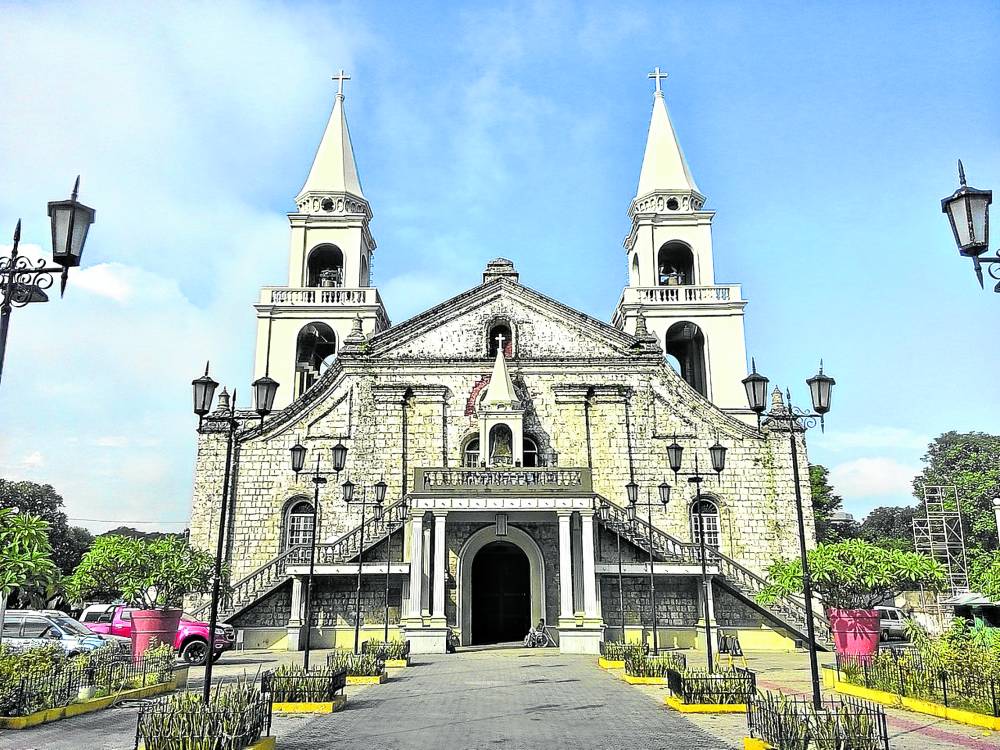Iloilo of past and present

The Iloilo Provincial Capitol is just one of the many modern buildings that have become famous landmarks in the city.
Iloilo City is one place that will surely tickle your fancy if you’re the type of person who appreciates historical architecture but enjoys modern surroundings.
Dubbed as the “Heart of the Philippines” due to its geographic location, this Visayan capital features heritage structures, gastronomical delights and modern landmarks that can easily rival its Metro Manila counterparts. Let’s take a quick dive into what makes this beautiful destination the favorite of many.
Grand homes

Now known as the Angelicum School Iloilo, the former Lizares Mansion features stained glass windows and colorful bathrooms.
From grand mansions to ornate churches, Iloilo City offers numerous gems of Philippine architecture. The city is one of the few that has managed to preserve many of these historical sites through the combined efforts of the government and private groups.
One of the must-see heritage sites in the area is the Angelicum School in Jaro. Popularly known to tourists as the Lizares Mansion, this place features a combination of Spanish and American influences in its building elements. It was originally built by Don Emiliano Lizares, a local sugar baron, in 1937. It was then sold to the Dominican religious order in 1962 and by 1978, it began its operations as the Angelicum School Iloilo.
Designed by the architect Andres Luna de San Pedro, son of the legendary painter Juan Luna, the home features Beaux-Arts elements combined with Roman carvings.
The building is quite simple compared to other structures built during the era. The grand tower on the left, however, features prominent stained glass windows which are visually striking when seen from outside and inside. The interiors of the home continues the grand vision of its original owner, with its original mosaic cladding and ornate balustrades. Even the bathrooms are quite charming, with their unique color palettes that are quite unusual for the 1930s.

Nelly’s Garden in Iloilo City features four hectares of vast greenery with a majestic mansion in the middle.
Nelly’s Garden in Jaro is another majestic home that could rival the grandeur of the Lizares Mansion. Named after the original owner’s eldest child, the estate occupies four hectares of land, majority of which caters to vast greenery—hence, the name. It is now owned by the Lopez clan of ABS-CBN fame and is open to public tours and events.
Exemplifying Beaux-Arts elements, the home features a curved wooden staircase and an ornate ceiling. Poster beds flank the bedrooms and vintage furniture fill the common room. Outdoors, the building features intricately carved pilasters washed in white. The gorgeous design and imposing structure of the home has led to its declaration as a National Heritage House in 2004.
Ornate churches

With its dramatic spires and lights, Molo Church showcases neo-Gothic elements designed for the Philippine climate.
Moving on to religious structures, one ought to visit the town of Molo. While famous for its noodles, the town also takes pride in its heritage structures. The Molo Church in particular features a neo-Gothic structure showcasing a feminist theme of religious icons.
Also known as the Saint Anne Parish Church, the Molo Church was originally built in 1831. The current structure featuring concrete elements, however, was designed in 1866 and completed in 1888.
The church features multi-spired towers and distinct finials—elements typical of the Gothic Revival era. Inside, two rows of female saint statues guard the path to the altar. This unique arrangement has led people to call the church a feminist’s sanctuary. Saint Anne, the church’s patroness, can be seen next to the Blessed Virgin and Holy Trinity at the main altar. These unique features have led the National Historical Institute (NHI) to declare the church a national landmark in 1992.
Another historical site you ought to visit in Iloilo is the Jaro Metropolitan Cathedral. Officially known as the National Shrine of Our Lady of Candles, the structure was built in 1874, though the parish itself was already in existence since 1587.
An example of a Romanesque Revivalist church, the building features a cross-shaped floor plan and a vaulted ceiling. Its facade features a simple, symmetrical design, flanked by two modern belfries which were later additions. A separate, more dated belfry stands across the street—the sole remnant of the original church that was destroyed in an earthquake. Inside the church, an all-male cast of Catholic saints adorn the interiors, an intentional response to the all-female group featured in the nearby Molo Church.

The Jaro Metropolitan Cathedral features a stone edifice flanked by modern belfries that complement its Romanesque Revivalist theme.
Jaro Cathedral was declared a historical landmark by the NHI in 1976. It continues to be a popular destination among pilgrims and architecture enthusiasts.
A place like no other
While these structures are famous in Iloilo City, they are only some of the numerous architectural treasures that can be found in the “Heart of the Philippines.”
Just a ride away the heritage icons, modern edifices such as malls, government buildings and even condominiums can now be found in the city. Many of these newer structures attempt to pay homage to the city’s rich history, with modern takes on Romanesque elements and grand designs.
While varying in stories and age, the past and present structures of Iloilo all allude to a rich history and an even richer future for the beloved city and its citizens. Visit Iloilo today and discover built heritage amid a modern environment.
Sources: https://www.theoldchurches.com; https://www.exploreiloilo.com; https://bluprint.onemega.com; https://iloilo-travel-guide.blogspot.com; Patrickroque01, Bengoeswhere, Philippine Information Agency and Americana22ount via Wikimedia Commons

